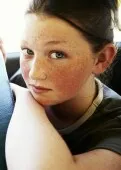Review found cost, fear of kids becoming sexually active deters some parents
WebMD News from HealthDay

By Denise Mann
HealthDay Reporter
MONDAY, Nov. 25, 2013 (HealthDay News) -- When it comes to being vaccinated and protected against the human papillomavirus (HPV), too many U.S. adolescents are missing out, a new review finds.
Cost and parental concerns about the link to sexual activity may be why relatively low numbers of girls and boys are getting the HPV vaccine as recommended.
Educating doctors and parents about the benefits of the vaccine and debunking some of the myths that surround it may help improve these rates and protect more adolescents, experts said.
Two available HPV vaccines -- Cervarix and Gardasil -- protect against the strains of genital warts responsible for 70 percent of all cases of cervical cancer. The U.S. Centers for Disease Control and Prevention currently recommends routine HPV vaccination for girls aged 11 to 12.
They also recommend Gardasil for males starting at age 11 to protect against genital warts, as well as oral, penis and rectal cancers.
But "parents have a number of concerns including the mindset that 'my child isn't sexually active yet,' and many may hope that they will remain inactive for years to come," said study author Dawn Holman.
However, "vaccinating young is when the shot is most effective and a great way to protect your child's health, even if they wait to get married to become sexually active," said Holman, a behavioral scientist at the CDC's Division of Cancer Prevention and Control.
Holman and colleagues reviewed 55 studies on the HPV vaccine published from 2009 through 2012 to see why the rates remain low in comparison to other recommended vaccines. Their findings appear online in the Nov. 25 issue of JAMA Pediatrics.
Cost was cited as a major barrier by many parents. The American Cancer Society reports that the vaccine can cost about $130 per dose, and a series of three shots is required. Current changes in health care may help remove the cost barrier for some people, Holman said, and financial assistance programs are available to help pay for the shots.
Beside identifying barriers, the new study also highlighted ways to improve rates of HPV vaccine acceptance.
"Parents report that a recommendation from their health care provider is the key factor in their decision," Holman said, yet the study found that many didn't get this recommendation from their doctor.
Dr. Greg Yapalater, a pediatrician in New York City, routinely counsels adolescents and their parents about the HPV shot. "People shy away from anything that has to do with sex, and this shot has to do with the sex talk," he noted.
When talking to families, Yapalater discusses puberty and sexually transmitted diseases and how not to get them. "This opens up the chapter in terms of condoms and vaccinations," he said. "I spend time discussing this with the entire family as ultimately the parents are the ones who will say yes or no to the vaccine."
source : Why Many U.S. Preteens Aren't Getting the HPV Shot








